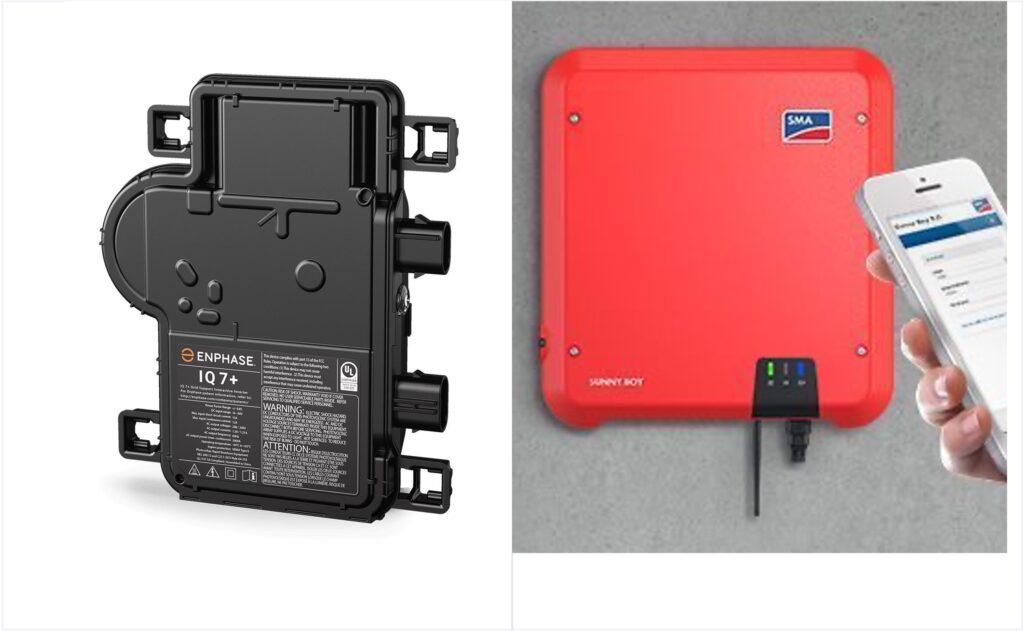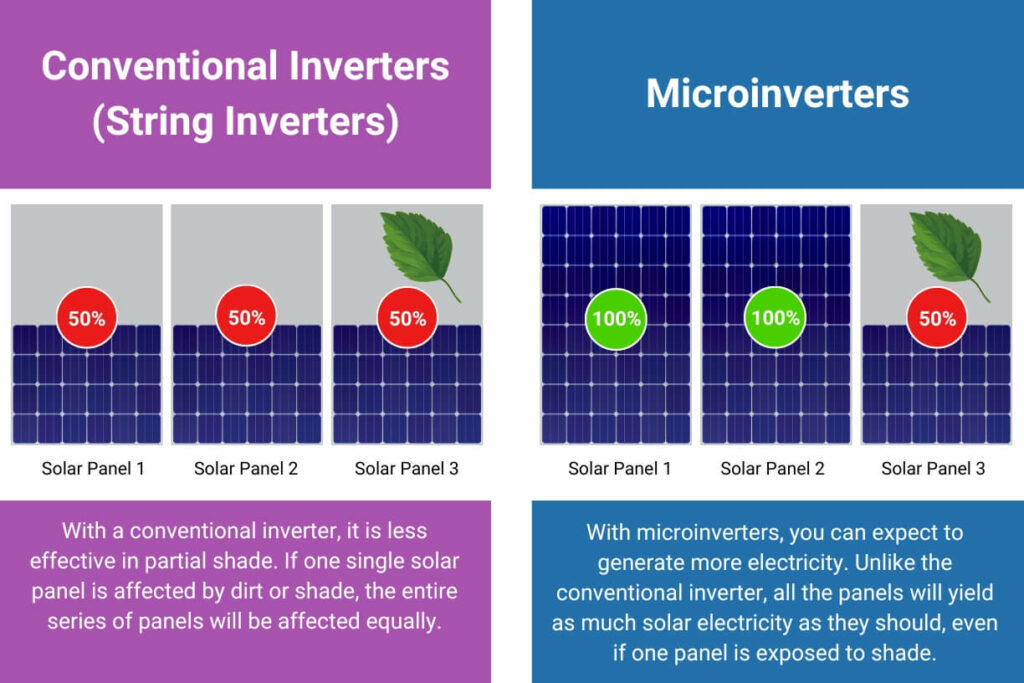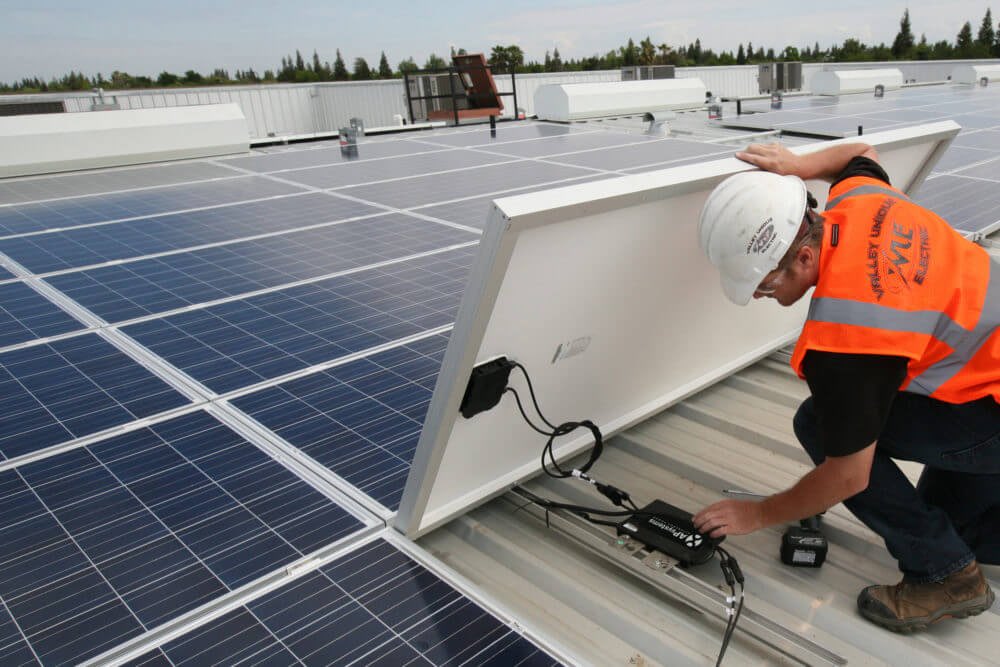Last update March 26th, 2025 at 11:39 pm
When you are planning on installing a solar panel system, you will be able to choose between a wide selection of inverters including microinverters vs conventional inverters.
The inverter plays an important role, as it will convert the direct current (DC) generated by the solar energy system, to alternating current (AC) that can be sent to the grid. If you prefer a grid-tie solar panel system, an inverter is essential.
Among the different types of inverters, you will find both microinverters vs conventional inverters. The latter is often referred to as central inverters or string inverters.
So which solution is the best? Here you will learn more about the differences between microinverters and conventional inverters, including their pros and cons.

Microinverters vs conventional inverters
Both microinverters and conventional inverters will enable you to reap as much power as possible from your solar panel system, but they work in different ways.

Conventional inverter
A conventional inverter can be described as a standalone unit. The inverter box is usually installed near the user’s energy meter or the service panel. In most cases, only one inverter box is installed – sometimes two. This depends on the size of your system.
The conventional inverter or string inverter works through a series circuit. In most cases, you will have six to twelve solar panels that are individually placed in a string series. The power is routed through the string inverter and into the circuits of your house.
Pros:
- Lower cost: Compared to the microinverter, the conventional inverter is more affordable. The installation is also quicker, which means lower installation costs.
- Fewer connections: With fewer connections than most microinverters, the conventional inverter is less likely to be cabled incorrectly.
Cons:
- Shorter warranty period: The conventional inverter usually will not last for more than eight to twelve years, and this also affects the warranty period.
- Less effective in partial shade: The biggest disadvantage of the conventional inverter, is the fact that it does not work as effectively in partial shade. If one single solar panel is affected by dirt or shade, the entire series of panels will be affected equally.
- More complicated to expand: Solar panel systems with conventional inverters are not as easy to expand as systems with microinverters. If you are going to increase the system with more solar panels, you will also need a second conventional inverter. This can make the process both expensive and complicated.
- No insight into the performance of each panel: Conventional inverters do not have the technology to let you monitor the panel’s performance or status individually. This makes system monitoring more difficult.
Microinverter
When it comes to the basic function the microinverter has a lot in common with the conventional inverter. The most important difference is that the microinverters will be installed individually under every single solar panel.
In most cases, the number of solar panels and microinverters will correlate. In some cases though, you might see more than one solar panel per microinverter.
The microinverter will also work through a parallel circuit. Because of this, each solar panel will be able to generate as much power as possible – even if one of the units is exposed to shade.
Pros:
- Lifespan and warranty: In general, the microinverter will have a 25-year warranty. The product’s lifespan is longer than the conventional inverter’s.
- Suitable for tricky conditions: The microinverter is a better choice than the conventional inverter if your roof conditions are challenging. The panels can easily face different angles and are a flexible solution.
- More effective: With microinverters, you can expect to generate more electricity. Unlike the conventional inverter, all the panels will yield as much solar electricity as they should, even if one panel is exposed to shade.
- Safety: All the microinverters on your roof have rapid and effective shutdown capabilities, and will protect people from the high voltage.
Cons:
- Expensive: The biggest disadvantage of having microinverters, is the fact that it is more expensive than most conventional inverters. A price difference of $1,000 or more can be expected.

Microinverter vs conventional inverter: which solution is the best choice?
For most households, the microinverter will be the better choice. Despite the cost and amount of hardware and wiring, you will benefit from the microinverter’s flexibility, lifespan, effectiveness and high safety level.
Remember that some of your costs will be covered by the government rebate and that the payback time usually is relatively short (four years). A solar panel system from a CEC-approved installer will be a cost effective solution in the long run! Make sure you get several quotes for such an important investment.